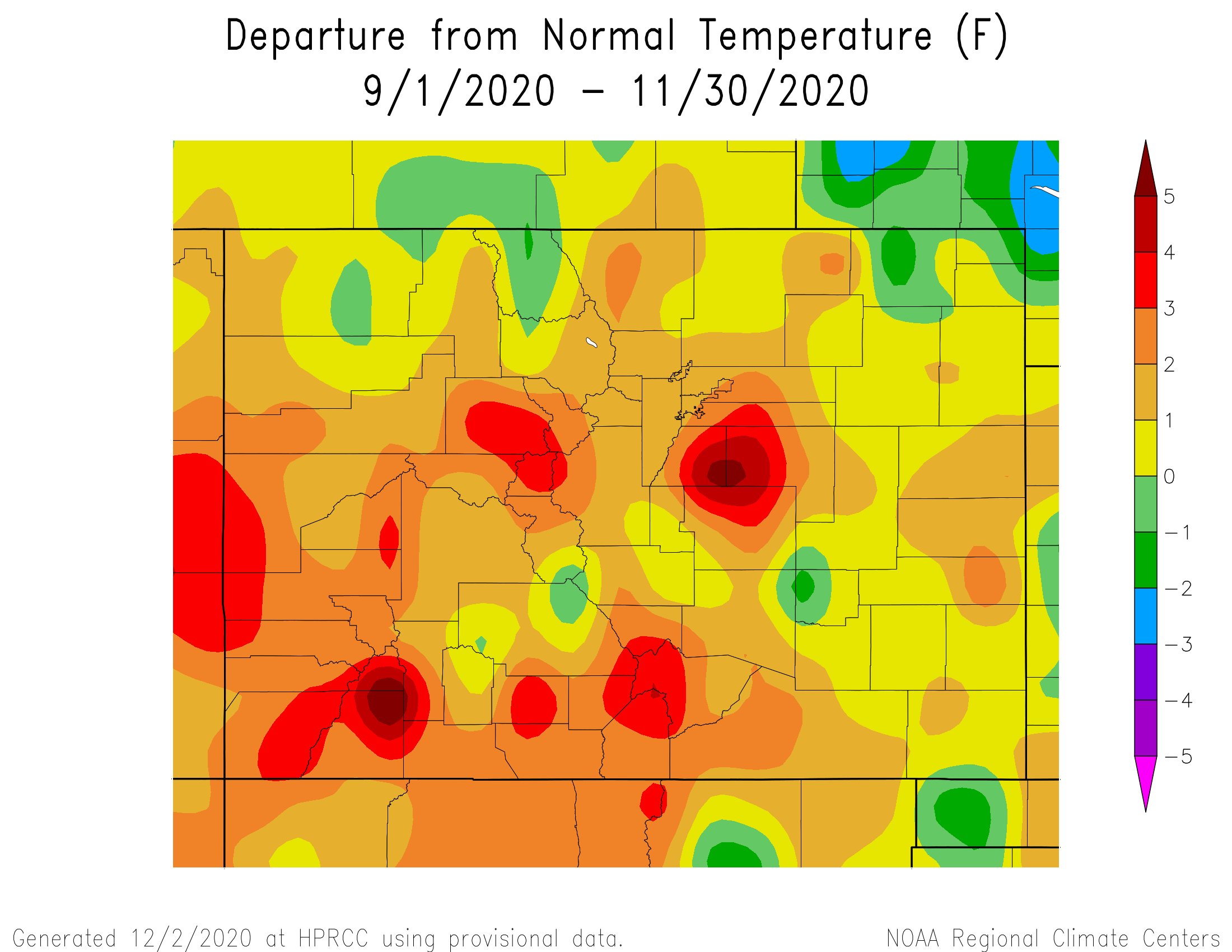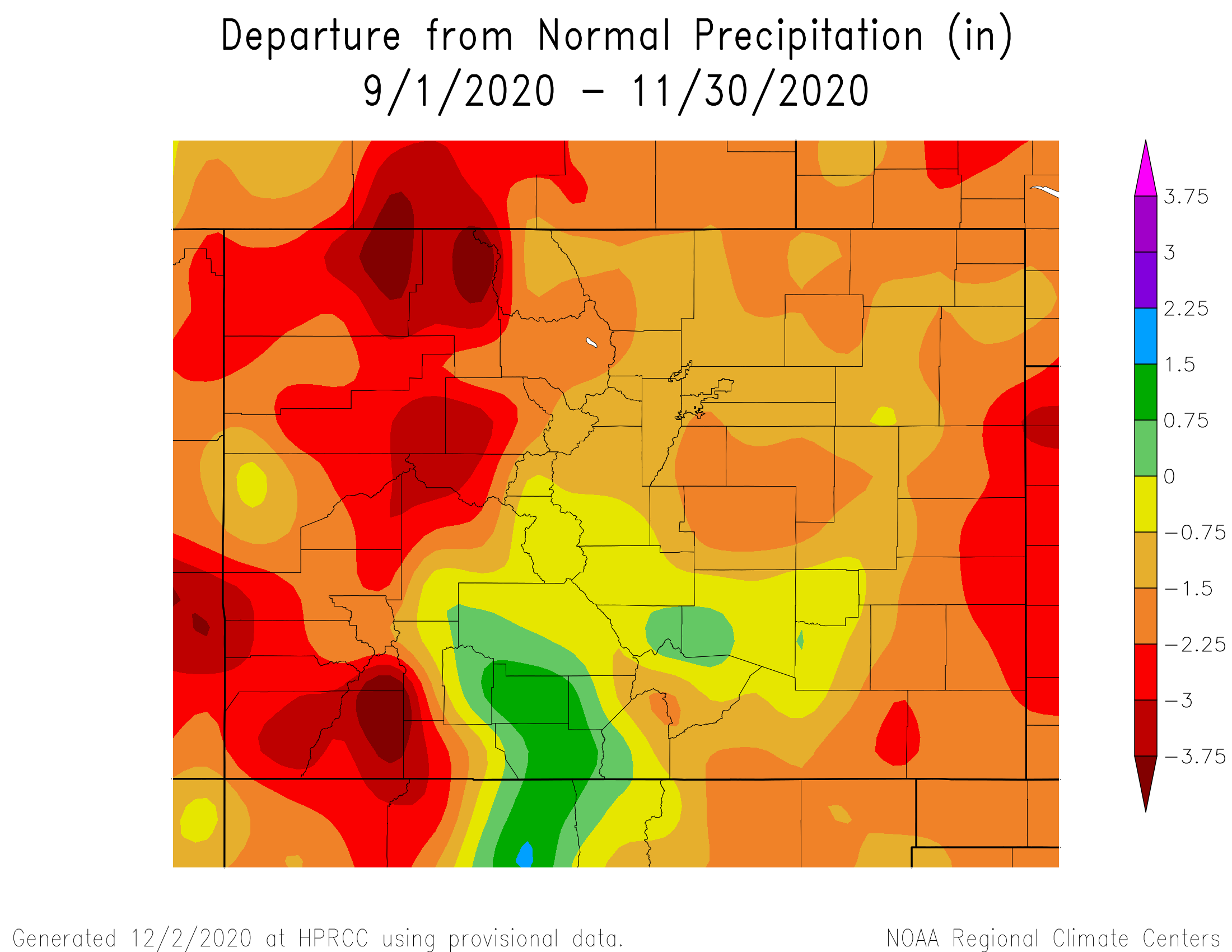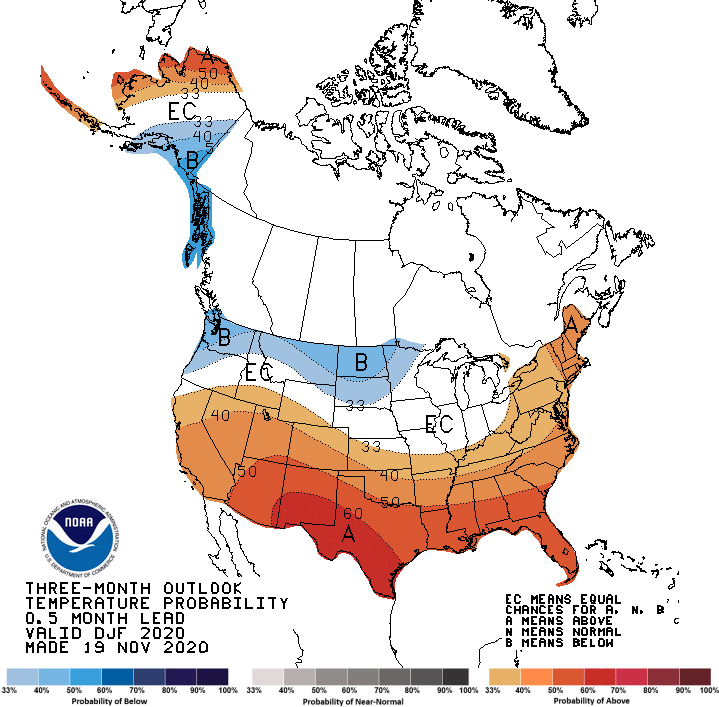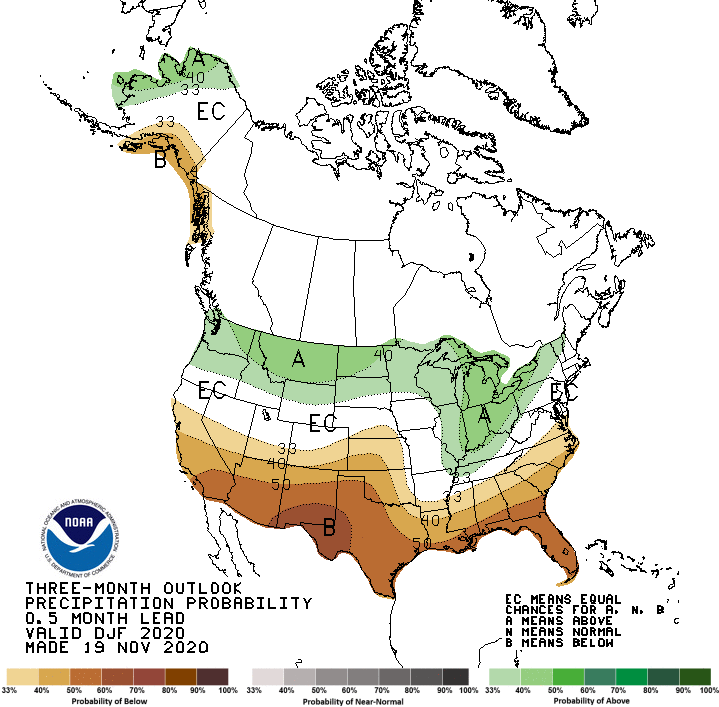The start of Meteorological Fall 2020 (September, October and November) was extremely warm, with Alamosa, Colorado Springs and Pueblo all setting new September and Fall record high temperatures, with a possible new Colorado September record high temperature of 108 degrees set in La Junta on September 6th. This record warmth was followed by record cold temperatures and record snowfall, as an unseasonably cold and strong storm system moved across the state September 8th through September 10th. Generally warm and dry conditions were experienced across the state through the rest of September, with a few minor fronts bringing a few days of slightly cooler temperatures to the region. October of 2020 was another month of extremes across south central and southeast Colorado. The first half of the month saw extremely warm and mainly dry conditions statewide, with Colorado Springs (87F) and Pueblo (94F) both tying their respective record high monthly temperatures. This was followed by another round of record cold temperatures and record snowfall, as another unseasonably cold and strong storm system moved across the state October 25th through October 27th. This unseasonably cold system allowed Pueblo to also set its coldest October day on record, when the low temperature dropped to -8 degrees on October 26th. November of 2020 started out very warm and dry across south central and southeast Colorado. The rest of the month saw ebbs and flows of temperatures, as a few passing weather systems brought some beneficial moisture to mainly the central and southwest mountains, along with some briefly cooler temperatures to the region, before warmer and drier conditions returned
For the Fall of 2020 as a whole, above to well above normal temperatures were experienced across south central and southeast Colorado, save for pockets of at or below normal temperatures across portions of the Arkansas River Valley. As for precipitation, below to well below normal precipitation was experienced across most of south central and southeast Colorado, save for pockets of at and above normal precipitation across the San Luis Valley and mid Arkansas River Valley. The following graphics indicate seasonal temperature and precipitation departures from normal across the state for the Fall of 2020.
 |
 |
The preliminary average temperature for the Fall of 2020 in Alamosa was 44.6 degrees. This is 2.1 degrees above normal and makes the Fall of 2020 the 17th warmest on record in Alamosa. This remains well behind the warmest Fall, 2014, when the average Fall temperature was 49.1 degrees. Alamosa recorded 2.89 inches of precipitation through the Fall. This is 0.88 inches above normal and makes the Fall of 2020 the 11th wettest on record in Alamosa. This remains well behind the wettest Fall, 2013, when 5.14 inches of precipitation was recorded. Alamosa recorded 26.6 inches of snow through the Fall. This is 20.8 inches above normal and makes the Fall of 2020 the 2nd snowiest on record, falling just behind the 34.1 inches of snow recorded through the Fall of 1972.
(click here for a more detailed Fall of 2020 Climate Summary in Alamosa)
The preliminary average temperature for the Fall of 2020 in Colorado Springs was 52.6 degrees. This is 3.1 degrees above normal and makes the Fall of 2020 the 7th warmest Fall on record in Colorado Springs. This remains well behind the warmest Fall, 2016, when the average Fall temperature was 56.0 degrees. Colorado Springs recorded only 0.61 inches of precipitation through the Fall. This is 1.80 inches below normal and makes the Fall of 2020 the 7th driest on record in Colorado Springs. This is well behind the driest Fall, 2016, when only 0.23 inches of precipitation was recorded. Colorado Springs recorded 6.0 inches of snow through the Fall of 2020, which is 1.8 inches below normal.
(click here for a more detailed Fall of 2020 Climate Summary in Colorado Springs)
The preliminary average temperature for the Fall of 2020 in Pueblo was 53.9 degrees. This is 2.0 degrees above normal and makes the Fall of 2020, tied with 5 other years as the 38th warmest Fall on record. This remains well behind the warmest Fall, 2016, when the average Fall temperature was 58.3 degrees. Pueblo recorded 1.41 inches of precipitation through the Fall, which is 0.49 inches below normal. Pueblo recorded 11.9 inches of snow through the Fall. This is 5.9 inches above normal and makes the Fall of 2020 the 11th snowiest on record in Pueblo. This remains well behind the snowiest Fall, 1991, when 41.9 inches of snow was recorded.
(click here for a more detailed Fall of 2020 Climate Summary in Pueblo)
Below is the Climate Prediction Center's (CPC) temperature and precipitation outlook for the Winter of 2020-21 (December, January and February), which indicates better chances of above normal temperatures and below normal precipitation across south central and southeast Colorado, save for equal chances of above, below and near normal precipitation across the central mountains.
 |
 |